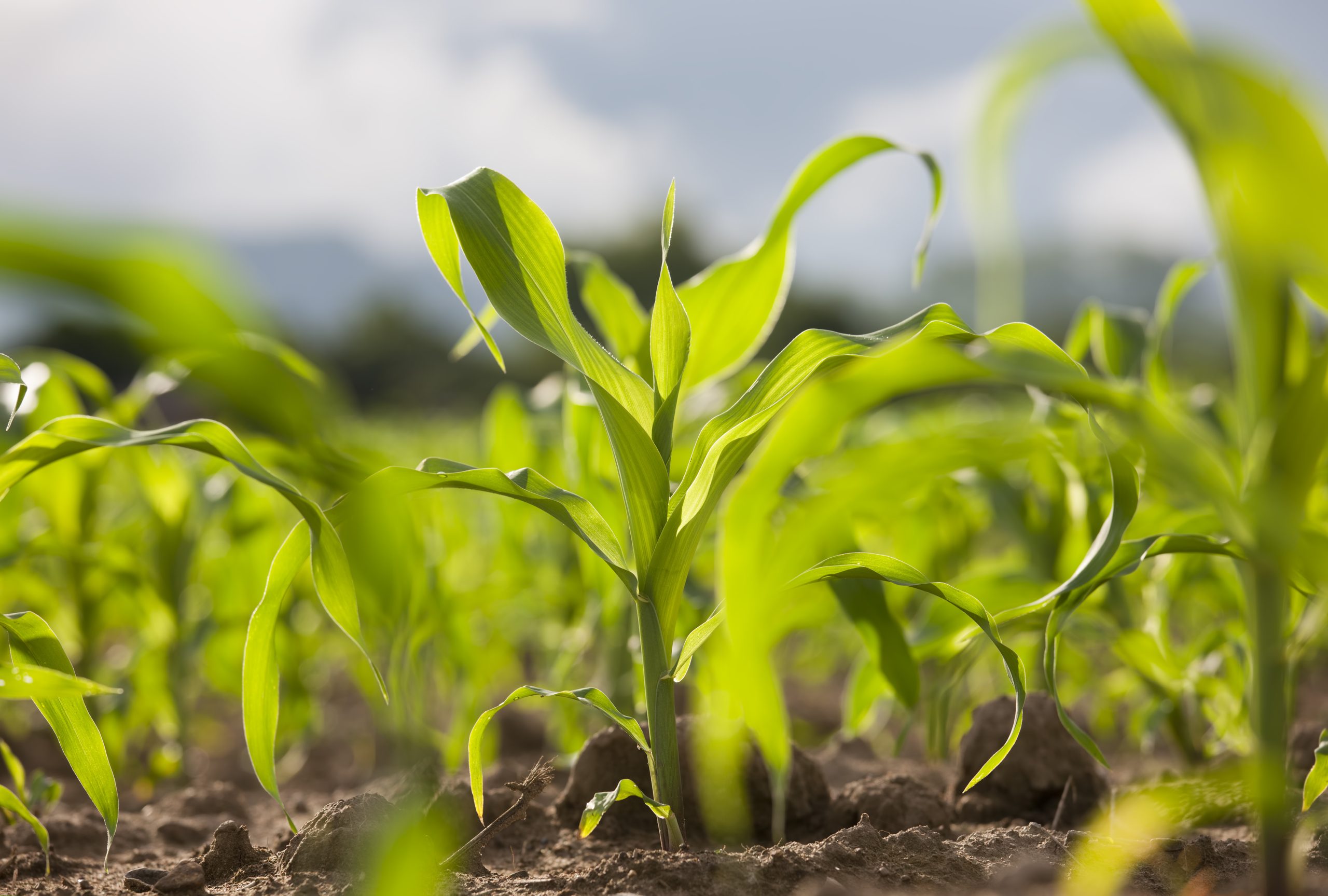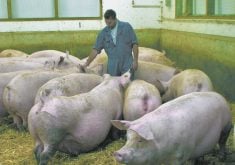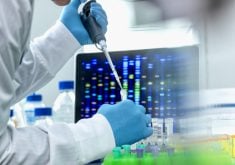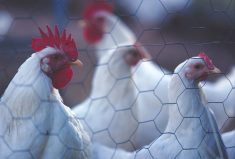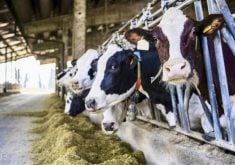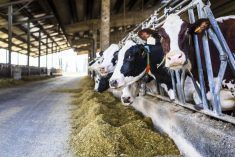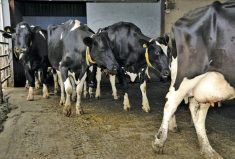Dairy cow genetic performance has raced ahead since the advent of genomics, bringing dairy farmers more ways to select for higher profitability cows.
More data gathering could create even more capacity for genomic improvement.
Christine Baes, Canada research chair in Livestock Genomics at the University of Guelph, who is also a researcher and lecturer at the University of Bern, Switzerland, took Grey Bruce Farmers’ Week Dairy Day attendees on a genomic tour in January.
Read Also
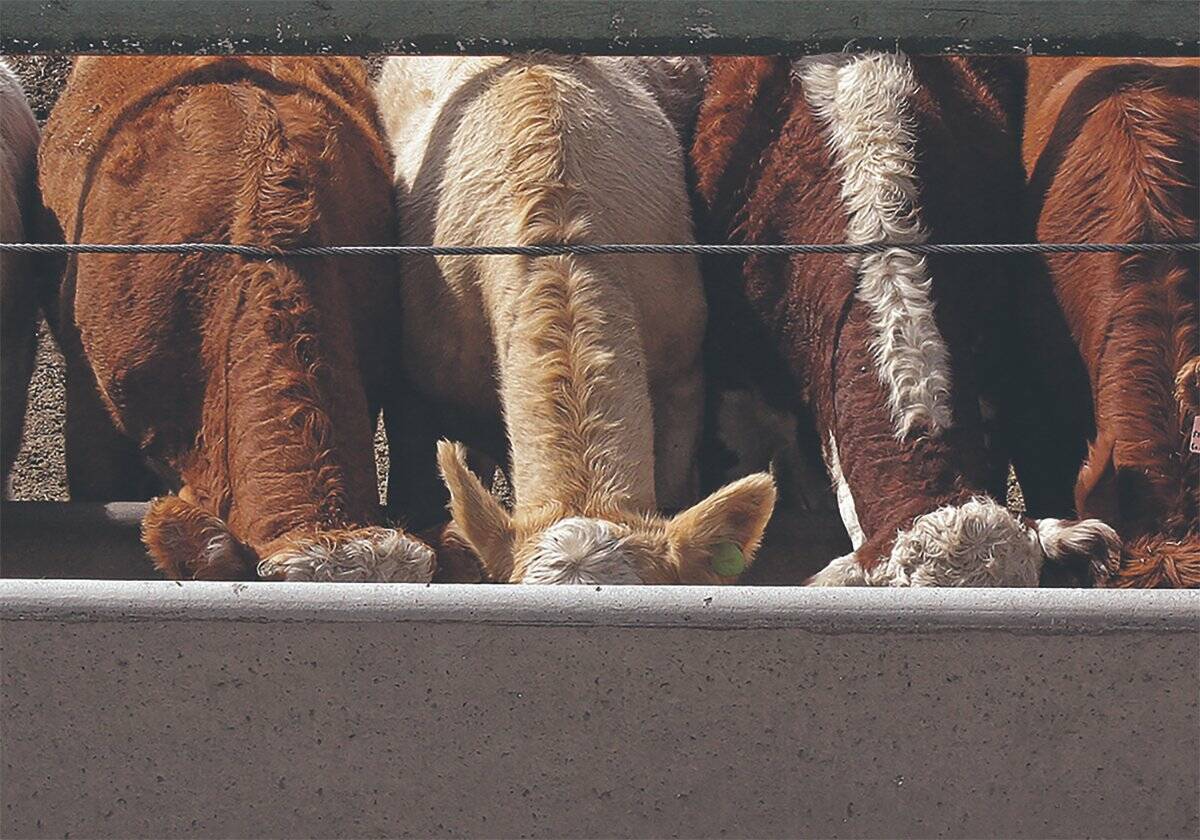
Ample supplies and improved livestock sector to boost Canadian feed sector: FCC
Abundant feed grain supplies and improved profitability for the livestock sector should support strong feed demand and sales through the winter, says a new report from Farm Credit Canada.
Why it matters: Genomic selection supports faster rates of genetic gain in many important cow traits while still maintaining high-quality phenotypes.
The main benefits of genomics are improved selection accuracy and decreased generation interval.
“There are many different strategies that producers can use depending on their willingness to be involved and to actively look at the values that come out of this technology,” said Baes.
Genomic information can be used for herd diagnostics, to verify parentage, inform mating programs to manage inbreeding or negative traits and provide a more reliable genetic profile of a female’s strengths and weaknesses.
Additionally, genomics are used to sort animals into a keep, buy or cull designation and influence breeding decisions on bull type, embryo transfers or investing in sexed semen.
Genomics can help manage replacements, create more of the best animals or fewer of the worst animals and manage inbreeding and recessive haplotypes that affect animal health.
“I think it’s important to note that genomics are not for everyone, but it can be a tool to increase your profit, to improve your management and improve the health and the welfare of your animals,” Baes said.
Testing requires a tissue sample or 50 to 100 clean hairs with roots, and is commonly done at birth, weaning, vaccination and pre-breeding. Results are available three to five weeks after submission.
“The greatest impact on a herd due to genomic selection comes from testing just after birth and practicing selection among groups of heifers before they have their first calf,” Baes said.
“This type of strategy makes sure the superior females enter the milking herd, increasing the average genetic merit of heifers entering the milking herd, as well as reducing the cost of raising replacements, which is typically a large cost on most farms.”

Baes pointed to an image of four dairy cows genotyped at one year old instead of at birth. Their genomic breeding values ranged from 324 Pro$ to 1903 Pro$. Without this cost-benefit information, she said culling would involve far more guesswork.
“(Culling) the heifer with the lowest estimated breeding value, the average profit potential passed to the offspring of this group is $1,356 compared to $1,098, so you’ve got a gain of $259,” said Baes.
“Had this animal been genotyped at birth, she wouldn’t have had to be raised at all. So that would have saved probably around $2,500 minus the $40 for genotyping.”
The animal with the highest Pro$ value could be bred with sexed semen or be an embryo donor for an 865 Pro$ animal.
Using Pro$ cow genetic trends from 1990 to 2008 showed a yearly net benefit per cow of $84 to the producer. In 2009, after the introduction of genomics, it shot up to $171 per year.
“We can expect this value to increase even more as new traits are added to Pro$ and as the costs associated with raising cattle increase, so does the potential profit,” she said. “There are many strategies for using genomic information, but it is expensive fun if you don’t use the information, so you have to think very carefully before implementing.”
Baes said new technologies allow more accurate measurement of animals and data consolidation to improve genetic evaluation and management. On the flip side, there are significant variations in technology formats, and not all data is available or flows to Lactanet to be used for genetic and genomic evaluation on a national scale.
“We need a multidisciplinary approach that’s required for analyzing this data and for understanding what it actually means,” she said.
“We need software development and visualization tools to get the most out of it and to be able to compare across herds.”
Testing data evaluation
The technology is fallible and requires close monitoring and evaluation of relevance to make it worthwhile.
“If we can get pipelines of data towards genomic evaluation and genomic selection, that would mean that we could do a much better job of selecting traits that are economically important, and also important in terms of animal health and welfare as well,” she said. “There’s opportunities, but there are also many, many challenges.”
For one year, Baes’s students graphed the phenotypic and genetic correlations between all 67 traits used in the Canadian genetic evaluation program, which can be found at https://cgil.shinyapps.io/correlations.
“What you can see there is the relationship between, for example, type traits and health traits, or the relationship between production traits and longevity,” she said. “This is a really neat way of looking at how these traits are really interconnected.”
The graph underlines the degree of care required in selecting traits to include in a national evaluation. Understanding how traits affect one another and the interrelationship is imperative for designing sustainable breeding programs.
Baes used Jelly Bean and Polka, cows that at 90 days in milk shared ratings of 3.3 per cent protein and 3.6 per cent fat. Jelly Bean produced 90 kilograms of milk to Polka’s 60 kg.
The two cows share 99.7 per cent of their basis DNA but Jelly Bean’s genetics show a triple T and double T, whereas Polka’s show a triple G and double-A.
These differences are called Single Nucleotide Polymorphisms, or SNPs. SNP chip testing costs $30 to $50 and allows producers to genotype their cows. Then, armed with genetic traits, producers can focus on genetically superior breeding and cull poor performers.
Many traits
Milk production is only one facet of traits that the Canadian dairy industry collects. There are 60 traits, including health and fertility, type and production traits, aggregated within the Lifetime Performance Index (LPI), which keys on type, and the Pro$ index, which emphasizes health, fertility and production to select the next generation of cows.
“Increasing reliability allows more effective genetic progress so we can manage animals differently, and we can place more emphasis on higher-ranking animals,” Baes said. “In the past, parent averages have served us well, but genomic technology has boosted reliability quite considerably.”
Genomic information requires a massive amount of high-quality data on many cows and traits to ensure genetic variation and improvement. Still, it supports faster rates of genetic gain in economically important traits.
Baes showed a graph tracking the yearly rate of genetic progression of somatic cell score (SCS) and herd life. From 1994 until approximately 2003, SCS standard deviation increased by .04 while herd life decreased by -.02, neither on a positive trajectory.
In 2007 the two scores met as SCS began to drop by -.04 and herd life increased by .05 standard deviation. With the introduction of genomic selection from 2009 to 2014, the standard deviation for SCS decreased significantly by -.12 and herd life increased by .23.
“This is mainly due to the increased reliability of the genomic breeding values,” she said, adding high-quality phenotypes are still required.
“We can clearly see that genomic selection has catapulted us into a new era of breeding.”

